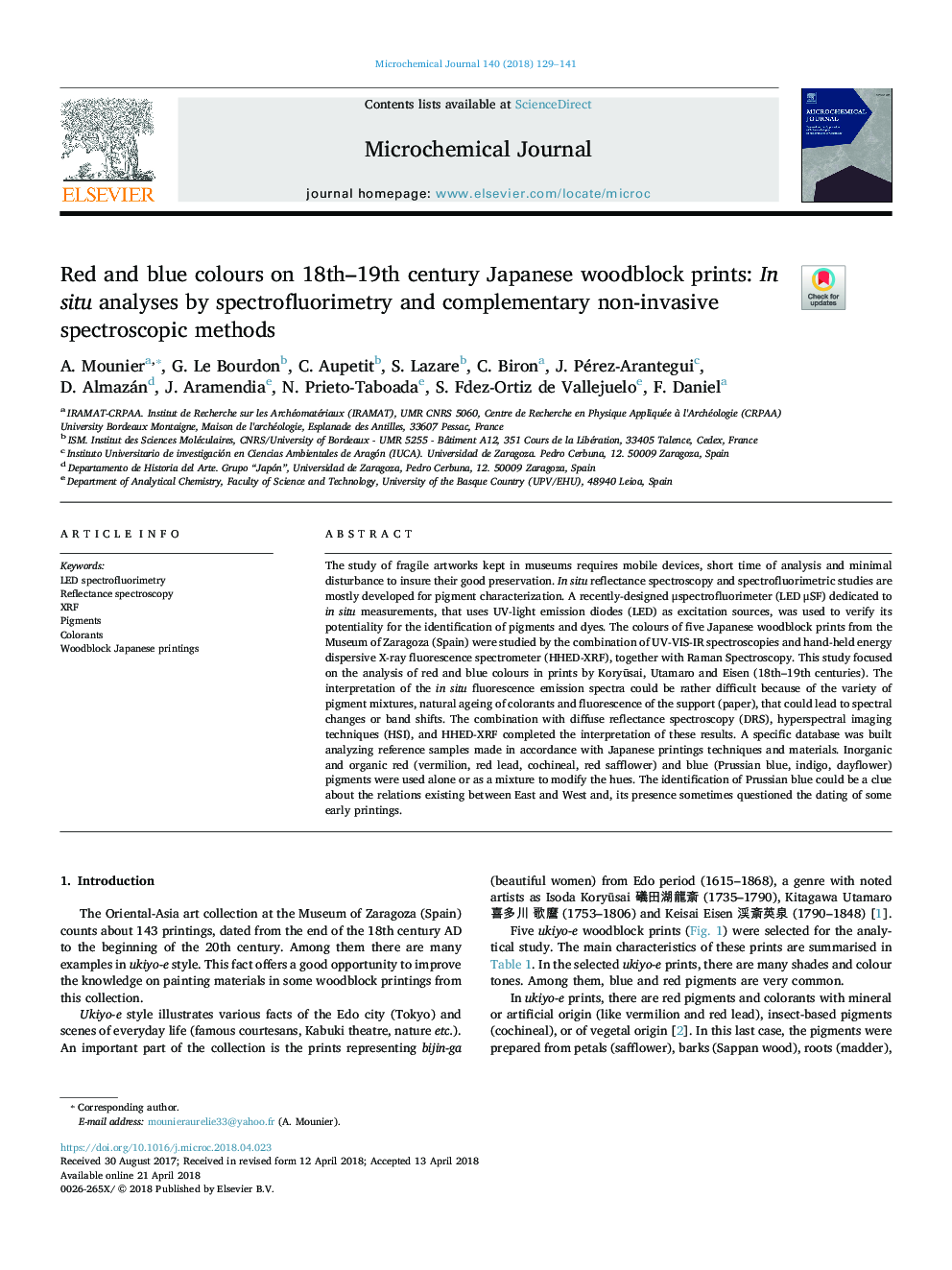| کد مقاله | کد نشریه | سال انتشار | مقاله انگلیسی | نسخه تمام متن |
|---|---|---|---|---|
| 7640485 | 1494854 | 2018 | 13 صفحه PDF | دانلود رایگان |
عنوان انگلیسی مقاله ISI
Red and blue colours on 18th-19th century Japanese woodblock prints: In situ analyses by spectrofluorimetry and complementary non-invasive spectroscopic methods
ترجمه فارسی عنوان
رنگ قرمز و آبی در قرن نوزدهم و نوزدهم چاپ چوب بری ژاپن: در محل تجزیه و تحلیل توسط اسپکتروفتومتری و روش های غیر تهاجمی تکاملی اسپکتروسکوپی
دانلود مقاله + سفارش ترجمه
دانلود مقاله ISI انگلیسی
رایگان برای ایرانیان
کلمات کلیدی
موضوعات مرتبط
مهندسی و علوم پایه
شیمی
شیمی آنالیزی یا شیمی تجزیه
چکیده انگلیسی
The study of fragile artworks kept in museums requires mobile devices, short time of analysis and minimal disturbance to insure their good preservation. In situ reflectance spectroscopy and spectrofluorimetric studies are mostly developed for pigment characterization. A recently-designed μspectrofluorimeter (LED μSF) dedicated to in situ measurements, that uses UV-light emission diodes (LED) as excitation sources, was used to verify its potentiality for the identification of pigments and dyes. The colours of five Japanese woodblock prints from the Museum of Zaragoza (Spain) were studied by the combination of UV-VIS-IR spectroscopies and hand-held energy dispersive X-ray fluorescence spectrometer (HHED-XRF), together with Raman Spectroscopy. This study focused on the analysis of red and blue colours in prints by Koryūsai, Utamaro and Eisen (18th-19th centuries). The interpretation of the in situ fluorescence emission spectra could be rather difficult because of the variety of pigment mixtures, natural ageing of colorants and fluorescence of the support (paper), that could lead to spectral changes or band shifts. The combination with diffuse reflectance spectroscopy (DRS), hyperspectral imaging techniques (HSI), and HHED-XRF completed the interpretation of these results. A specific database was built analyzing reference samples made in accordance with Japanese printings techniques and materials. Inorganic and organic red (vermilion, red lead, cochineal, red safflower) and blue (Prussian blue, indigo, dayflower) pigments were used alone or as a mixture to modify the hues. The identification of Prussian blue could be a clue about the relations existing between East and West and, its presence sometimes questioned the dating of some early printings.
ناشر
Database: Elsevier - ScienceDirect (ساینس دایرکت)
Journal: Microchemical Journal - Volume 140, July 2018, Pages 129-141
Journal: Microchemical Journal - Volume 140, July 2018, Pages 129-141
نویسندگان
A. Mounier, G. Le Bourdon, C. Aupetit, S. Lazare, C. Biron, J. Pérez-Arantegui, D. Almazán, J. Aramendia, N. Prieto-Taboada, S. Fdez-Ortiz de Vallejuelo, F. Daniel,
